A new statewide poll of North Carolina’s Latino electorate commissioned by the National Council of La Raza Action Fund (NCLR Action Fund) and implemented by Latino Decisions, shows immigration remains the top priority for Latino voters. View TOPLINES HERE and SLIDE DECK HERE.
There are over 115,000 Latinos registered to vote in North Carolina, and 79 percent indicate they will vote on Election Day. The very tight Senate race makes this growing segment in the state electorate even more important to the election outcome. We highlight some of the most compelling findings about North Carolina’s Latino electorate below.
1. Hagan leads Tillis 40-15
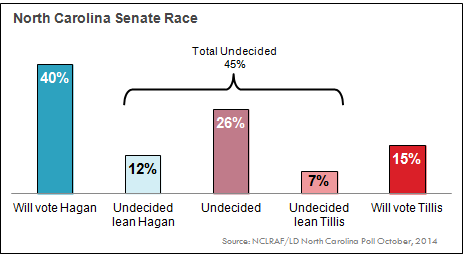
In the race for U.S. Senate, incumbent Senator Kay Hagan leads her Republican challenger 40 to 15, and 45 percent of Latino registered voters remain undecided. Including “leaners”, it is Hagan 52 and Tillis 22, with 26 percent still undecided. Given the very close race at hand, winning over the undecided share will be critical.
2. Immigration is the most important issue to Latino voters in North Carolina.
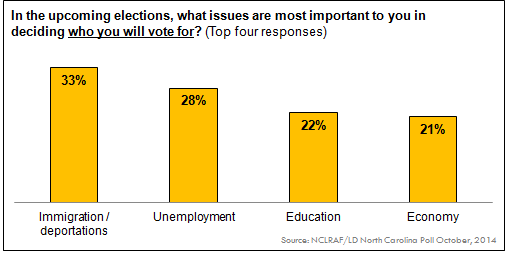
One out of three Latino voters in North Carolina indicates immigration is the most important issue to them when choosing a candidate. Similar to 2012, this issue resonates more in North Carolina than other states we recently polled.
3. Neither party fares well with Latino voters
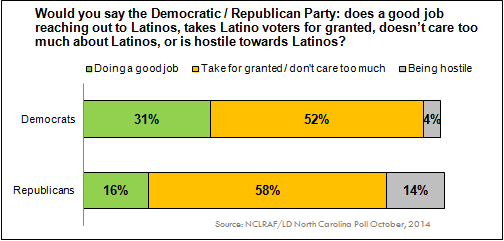
Only 16 percent of respondents say the Republican Party is doing a good job reaching out to Latinos compared to more than 70 percent who say that the GOP either doesn’t care about or is hostile to Latinos. Democrats fare marginally better with thirty-one percent of those polled saying Democrats are doing a good job with outreach efforts, yet more than half think Democrats take Latinos for granted or don’t care much about them altogether.
4. Community is key to mobilizing this electorate
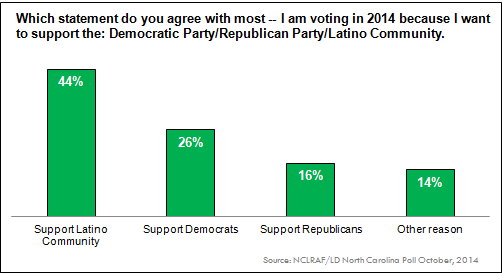
Far more Latino voters turnout to advance their own community interests, not in support of either party. Party loyalty does not draw a large segment of these voters to the polls. This means that parties and candidates must work harder to convince these voters.
5. Parties and candidates need to build relationships with Latino voters
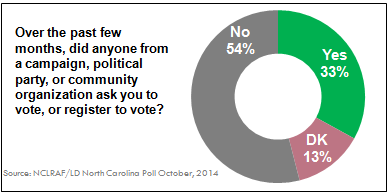
More than half of respondents (54 percent) have not been contacted by any campaigns or parties during this election cycle. If candidates and parties want to win over this electorate, they must engage with them on an ongoing basis, and especially during election season. Turnout and vote choices are heavily influenced by contact and a large share of these voters have yet to decide on a candidate. As Matthew McClellan, Executive Director of NCLRAF observed, “If either candidate or party puts a greater effort into outreach and can illuminate where they stand on issues that our important to this voting bloc, then they have the potential to shake up these numbers.”


